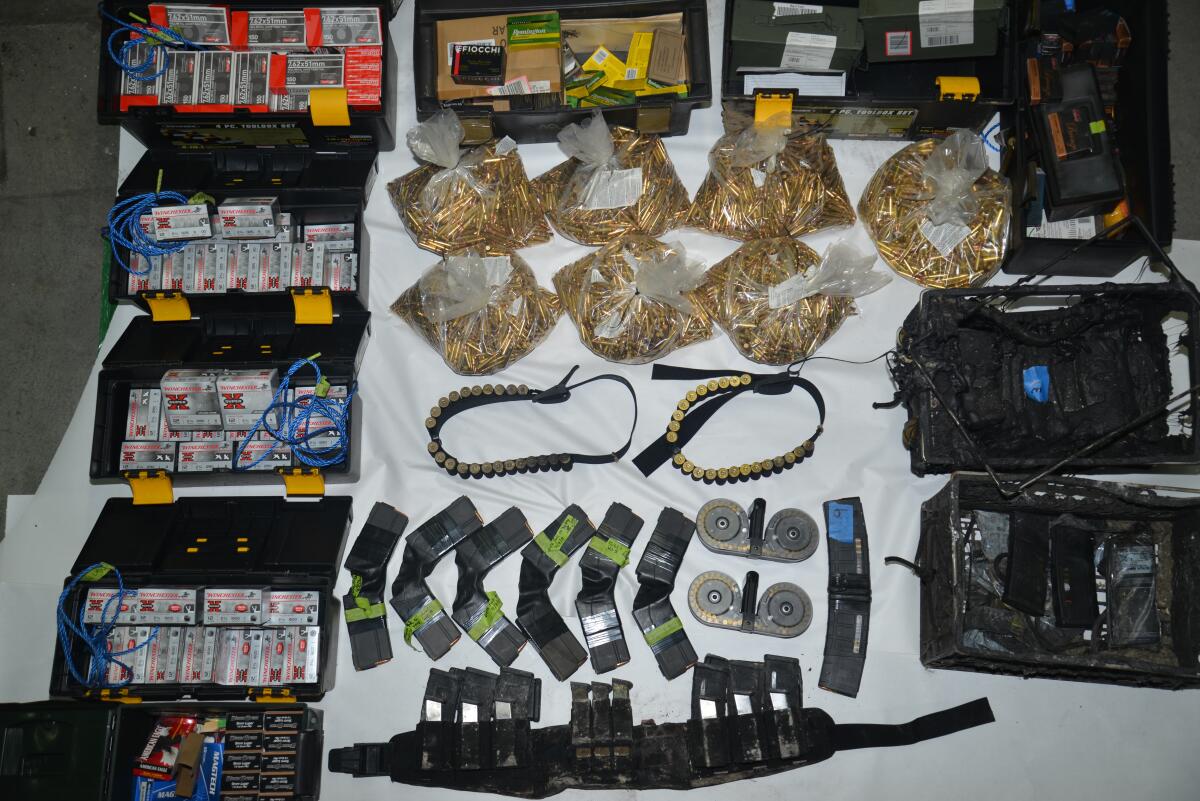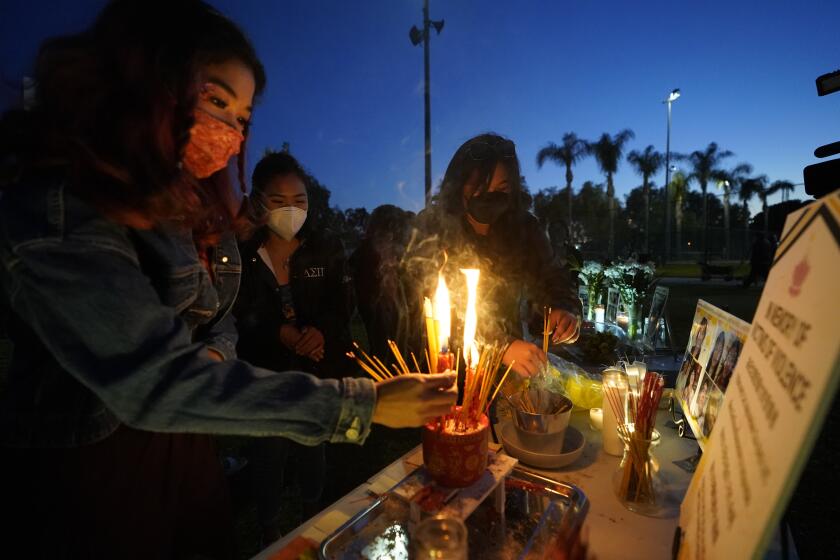Op-Ed: My city’s new gun control laws will help more than waiting on Congress to do something

A gunman holding four people hostage at a Colleyville, Texas, synagogue this weekend provides another reminder of the daily threat of gun violence to our local communities. San Jose, where I am mayor, is hardly immune: Our 1 million residents have endured three mass shootings in three years, along with hundreds of gun-inflicted killings, suicides and serious injuries.
Last June our City Council unanimously approved my proposals that will mitigate gun harm in our community — and a final vote on Jan. 25 should turn them into law. The proposals include two requirements for gun owners that no city or state in the U.S. has ever implemented: the purchase of liability insurance and the payment of annual fees to fund violence-reduction initiatives. We anticipate that a barrage of lawsuits from the firearm industry and gun rights advocates will follow.
Why should any city subject itself to litigation? Because now-common horrific reports of shootings throughout the nation do little more than elicit a performative parade of prayers and platitudes from Congress. Because problem-solving must be elevated over political posturing.
The NRA’s real political sway comes by way of its millions of members, who can mobilize whether or not the organization exists.
Because, as one grieving mother urged as I hugged her at her son’s memorial, “we just need somebody to do something.”
My proposals take a page from public health approaches that have reduced auto-related deaths, tobacco use and teen pregnancy in the U.S. They incentivize responsibility, draw on multi-disciplinary learning and invest in proven harm-reduction initiatives with the guidance of experts.
Requiring every gun owner in my city to carry liability insurance will better compensate unintentional shooting victims and their families for medical and related expenses. More importantly, insurance can also incentivize safer gun ownership. Risk-adjusted premiums will encourage owners to take gun-safety courses, use gun safes or install child-safe trigger locks to reduce the annual toll of accidental gun harm.
Unintentional shootings — often involving children — annually claim the lives of 500 Americans and injure another 26,000. The new laws coming to San Jose apply lessons from the insurance industry’s impact on auto safety. Reducing premiums on policyholders who drive more safely or buy cars with airbags or anti-lock brakes helped to reduce per-mile auto fatalities by nearly 80% over the last five decades, saving 3.5 million lives. We need a similar approach to address unintentional firearm risk because approximately 4.6 million children live in a household where a gun is kept unlocked and loaded, and shootings have become the second-leading cause of death among U.S. children and adolescents.
A year ago, a Santa Clarita student used a homemade gun to kill two classmates, including my daughter. U.S. regulations on such guns are way overdue.
Imposing a modest annual fee on gun owners can support underfunded domestic violence and suicide prevention programs, gun-safety classes, mental health services and addiction intervention. We’ve invited doctors, public health experts, and yes, gun owners, to help identify how to allocate the money from these fees in ways that will reduce gun violence. Prioritizing those investments to serve residents in gun-owning households will have the biggest impact because studies suggest that even a properly stored firearm in the home significantly increases occupants’ risk of death by homicide and suicide.
Gun rights advocates argue that gun owners should not have to pay a fee to exercise their constitutional right to bear arms. To be sure, the 2nd Amendment protects the rights of citizens to own guns, but it doesn’t require the public to subsidize gun ownership. Every day, taxpayers bear the financial burden of police officers, ambulances and trauma surgeons responding to gun violence. These direct costs of gun violence total $40 million annually for San Jose taxpayers, and $1.4 billion for taxpayers statewide.
Critics say that criminals won’t obey insurance or fee mandates — and they are right. But these ordinances create a legal mandate that gives police the means for at least the temporary forfeiture of guns from dangerous law-breakers. Particularly given the legally frail status of concealed-carry regulations before the current Supreme Court, law enforcement agencies face steep challenges keeping communities safe amid the ubiquitous presence of guns. Giving the police the ability to distinguish the scofflaws from the law-abiding among gun owners will have tremendous public safety benefits.
These new laws won’t end all gun violence. We’re deploying other interventions as well, such as bolstering gun violence restraining orders, banning untraceable “ghost guns” and preventing the illegal purchasing of firearms for people such as felons or minors who are not allowed to buy guns themselves. We need to coordinate early mental health interventions for individuals showing signs of distress as well.
There’s no one easy fix for the gun violence epidemic. But the fight against cancer shows a methodical way forward.
While Congress dallies, communities don’t have the luxury of dismissing the devastation of gun violence. We live among grieving family members; we hear echoes of painful eulogies and we work with traumatized friends. These new laws are no panacea, but they can reduce the unnecessary suffering in our community during a crisis that it is long past time to “do something” about.
Sam Liccardo is the mayor of San Jose, America’s 10th largest city.
More to Read
A cure for the common opinion
Get thought-provoking perspectives with our weekly newsletter.
You may occasionally receive promotional content from the Los Angeles Times.













